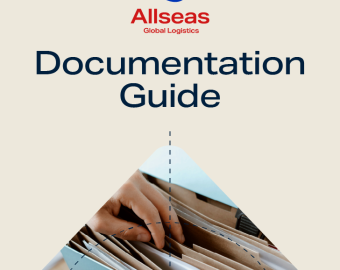Shipping cargo to the USA & Canada: What you need to know
01 November 2020
Shipping to the USA and Canada is quite different to the rest of the world. The USA government have specific requirements to be disclosed before your cargo can move from the country of departure.
With Brexit just around the corner there will be a few additional points that you need to be aware of if you’re planning future shipments to the USA and Canada.
There are a number of regulations specific to the United States that are required for shipping goods. Here we run through them, what you need to do, and how you can simplify the process.
Ensure you and your clients have a broker and are registered with USA customs
Customs brokerage in the USA is not without its pitfalls as your customer who is receiving the cargo may not have a broker appointed and/or be registered with USA customs. Some customer’s may have their own broker who we can nominate cargoes to clear your goods, deal with your bond and assist you with customs formalities.
If you do not have a broker, then we can assist you if your customer has a bond in place but we may need additional information from you. For example, for you to sign a Foreign Power Of Attorney (FPOA) which will allow our network in the USA to act on behalf of a foreign (to the USA) company.
Customs Bond in the USA
It is a legal requirement for your customer receiving the goods in the USA to have a bond. A Customs Bond prevents Customs related delays and are required on all commercial shipments valued at $2,500 or more. A Customs Bond also guarantees that the US Customs & Border Protection (CBP) is paid immediately if additional duties, penalties, or other obligations are assessed. Thereafter, these fees are reimbursed to the bond by the importer. The result is improved import efficiency for everyone and will prevent any issues, and more importantly fines and fees.
AMS and ISF (10+2)
Automated Manifest System (AMS)
As your freight forwarder, we or the exporter are required to submit AMS instructions for filing 48 hours before the vessel departs from the origin port. The AMS instructions are then sent across to our network in the USA/Canada who then have to complete what is essentially the same process on their side which is called Importer Security Filing (ISF) otherwise known as 10+2.
Importer Security Filing (ISF)
Filed in the USA the ISF is essentially the same information as the AMS but the importer or their agent/broker is responsible for filing the ISF
You will be asked to complete:
Shipper The full name, address and contact details of the shipper
Consignee The full name, address and contact details of the consignee
Manufacturer If different than of UK origin this must be stated as who the manufacturer is, their name and address and contact details
Final receiver The full name, address and contact details of the shipper
Cargo Exact piece count (pallets are not a recognised piece count) and weight(s)
Shipping Origin port, First USA port of call (entry) Each port the vessel will call at.
All of the above information will be held by different parties – including shipper, carrier and consignee. This can cause challenges to both the shipper and consignee if they don’t receive them before the cargo goes to port.
Failing to go through the correct channels can result in fines and even blacklisting – meaning shipping to this part of the world suddenly becomes impossible. All parties can be held liable for the same violation, too, with fines of typically $5000 per party involved in the mistake.
The Brexit factor
As the time of writing, we don’t know yet if there will be a trade deal with the EU. The UK government are talking and actively pursuing a trade deal with the USA but in current times in the pandemic things are moving slowly. We recommend to have the below in place when exporting to America.
EORI:
An EORI number – which stands for an Economic Operator Registration and Identification Number – is a unique ID code used to track and register customs information in the EU. If you don’t have one you can apply or check if you have one on the UK Gov website.
VAT Number:
Your company should have a valid UK Vat number. If this isn’t the case, then you may lose out on reclaiming VAT where applicable. We always recommend having a UK VAT number.
Using Allseas Global for shipping to the USA
- As with all shipments to and from the UK. The other docs and information that you will need to supply are:
- Commercial Invoice & or Packing List
- The HS code for all products otherwise known as Commodity code.
- Any technical drawing or picture for non-standard cargoes
- For hazardous cargo a DGN (dangerous goods note) and MSDS (material safety data sheet)
If you have any questions about shipping to the USA, get in touch with us on +44 (0)330 555 5555 or email Kris.Gray@allseasglobal.com and we’ll be happy to make this whole process simple and straightforward for you– offering specific advice on importing or exporting your cargo to the USA or Canada.



